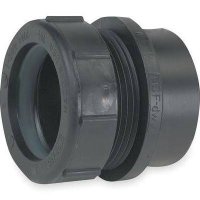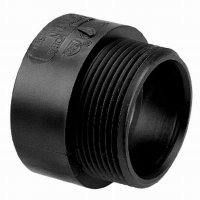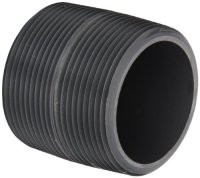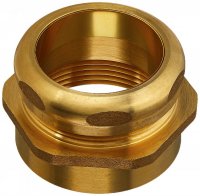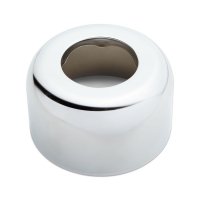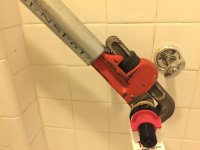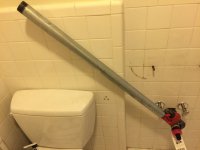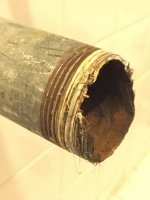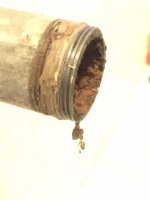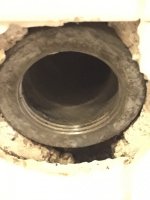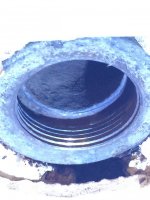Hello,
I am replacing the P-trap under a bath sink. I'd like to install a Kohler K-9000-CP brass P-trap. There is a 1-1/2" galvanized steel stub-out coming out of the wall (see the 1st picture). If I can get it out, I'd be left with a a 1-1/2" galvanized FIP hub recessed about a half inch into the tiled wall.
What's the best way to connect the brass P-trap to the steel stub-out or the FIP steel hub? I could use a brass desanco (picture 2) directly in the steel FIP hub but I believe contact between brass and steel results in galvanic corrosion. In fact, I noticed this corrosion on the steel stub-out shown in the 1st picture. The corrosion is on the underside not visible in the picture. Another problem with this approach is that I may not be able to get a grip on the nut formed into the body of the desanco as the steel hub is recessed into the wall.
I could cut the stub-out about 1" outside the wall and use a tubular coupling (e.g., Fernco Proflex 3002-150, see the 3rd picture) to connect to the P-trap outlet. The escutcheon that comes with the Kohler P-trap is not large enough to cover the tubular coupling. Do they make a chrome-finish escutcheon deep enough and wide enough to hide such a tubular coupling?
The original P-trap installed by a licensed plumber 15 years ago is shown in the 4th picture. Note this is a brass p-trap and the brass outlet was screwed on to the steel stub-out, a no-no as far as I know.
Thanks,
Atul
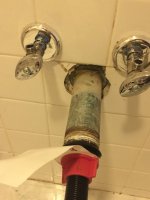
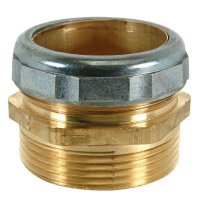
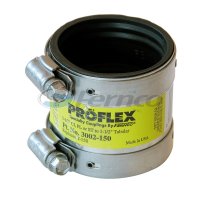
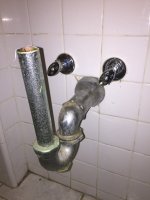
I am replacing the P-trap under a bath sink. I'd like to install a Kohler K-9000-CP brass P-trap. There is a 1-1/2" galvanized steel stub-out coming out of the wall (see the 1st picture). If I can get it out, I'd be left with a a 1-1/2" galvanized FIP hub recessed about a half inch into the tiled wall.
What's the best way to connect the brass P-trap to the steel stub-out or the FIP steel hub? I could use a brass desanco (picture 2) directly in the steel FIP hub but I believe contact between brass and steel results in galvanic corrosion. In fact, I noticed this corrosion on the steel stub-out shown in the 1st picture. The corrosion is on the underside not visible in the picture. Another problem with this approach is that I may not be able to get a grip on the nut formed into the body of the desanco as the steel hub is recessed into the wall.
I could cut the stub-out about 1" outside the wall and use a tubular coupling (e.g., Fernco Proflex 3002-150, see the 3rd picture) to connect to the P-trap outlet. The escutcheon that comes with the Kohler P-trap is not large enough to cover the tubular coupling. Do they make a chrome-finish escutcheon deep enough and wide enough to hide such a tubular coupling?
The original P-trap installed by a licensed plumber 15 years ago is shown in the 4th picture. Note this is a brass p-trap and the brass outlet was screwed on to the steel stub-out, a no-no as far as I know.
Thanks,
Atul




Last edited:

